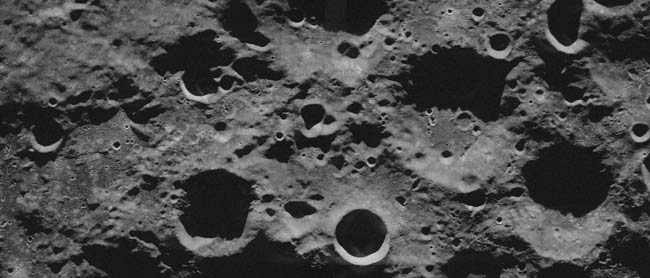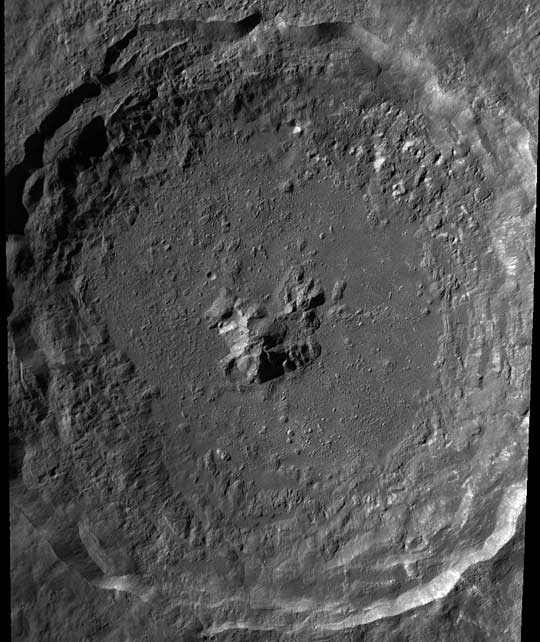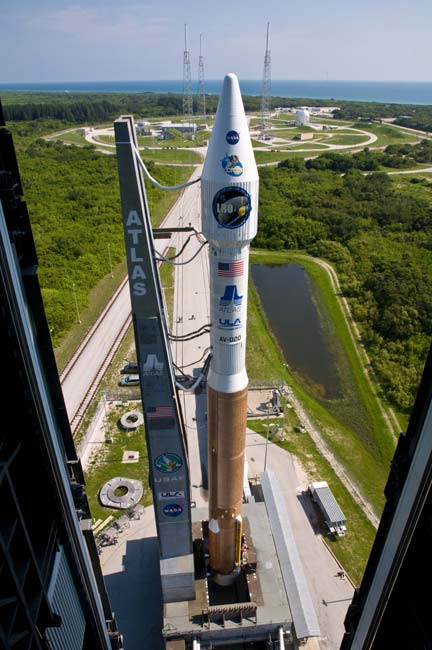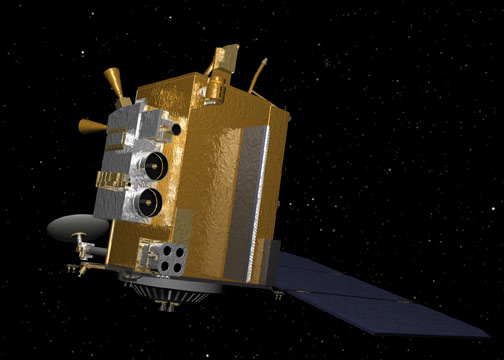Amazing Moon Photos from NASA's Lunar Reconnaissance Orbiter
Lazy Boulders in Scaliger Crater
An assortment of boulder trails decorate the floor of Scaliger crater in the southern farside highlands. Image released Feb. 26, 2013.
New Images Dampen Hope for Water Ice on Moon
This is a radar image of the south pole region of the moon showing Shackleton crater and Shoemaker crater where the Lunar Prospector orbiter was impacted into. The south pole is about on the center of the left rim.
Crater on the Moon Gets Stunning Close-Up
LRO image of Tycho crater. The proposed Constellation site is to the North of the crater's central peak.
New Photo of Earth Taken From the Moon
The Earth as seen from the moon on June 12, 2010 is the subject of this photo from NASA's Lunar Reconnaissance Orbiter, a mosaic taken during a calibration sequence. Full Story.
Where the Sun Doesn't Shine
Tuesday, April 26, 2011: The Lunar Reconnaissance Orbiter created this image of the moon's south pole, showing shapes reminiscent of cosmic ice or clouds. Not a single photograph, the image combines 1,700 images collected over 6 lunar days (6 Earth months) into a multi-temporal illumination map. Analyzing the digitized images, each pixel in the map represents the percentage of time each spot on the moon's surface was illuminated by the sun. Since the moon's spin axis remains almost perpindicular to the ecliptic plane, some areas near the lunar poles can stay in permanent darkness or nearly continuous sunlight. The Shackleton Crater lies at near the center of the map.
—Tom Chao
Moon Crater Has More Water Than Parts of Earth
An image of debris, ejected from the moon's Cabeus crater and into the sunlight, about 20 seconds after the Centaur rocket's impact. The inset shows a close-up with the direction of the sun and the Earth.
It's Official: Water Found on the Moon
An illustration showing the stream of charged hydrogen ions carried from the sun to the moon by the solar wind. Scientists think this process might explain the possible presence of hydroxyl or water on the moon.
Breaking space news, the latest updates on rocket launches, skywatching events and more!
Back to the Moon: NASA to Launch New Lunar Scouts
A ULA Atlas 5 rocket carrying NASA’s Lunar Reconnaissance Orbiter and Lunar Crater Observation and Sensing Satellites (LRO/LCROSS) rolls out from its Vertical Integration Facility at Space Launch Complex-41, Cape Canaveral Air Force Station, Fla., to its launch pad for a June 18, 2009 launch.
On Being Selected as an LROC Participating Scientist
This image shows a 2007 conceptual design for the Lunar Reconnaissance Orbiter (LRO).
West Wall of Moon's Aristarchus Crater
The west wall of the moon's Aristarchus crater seen obliquely by NASA's Lunar Reconnaissance Orbiter (LRO) from an altitude of only 16 miles (26 km).

Space.com is the premier source of space exploration, innovation and astronomy news, chronicling (and celebrating) humanity's ongoing expansion across the final frontier. Originally founded in 1999, Space.com is, and always has been, the passion of writers and editors who are space fans and also trained journalists. Our current news team consists of Editor-in-Chief Tariq Malik; Editor Hanneke Weitering, Senior Space Writer Mike Wall; Senior Writer Meghan Bartels; Senior Writer Chelsea Gohd, Senior Writer Tereza Pultarova and Staff Writer Alexander Cox, focusing on e-commerce. Senior Producer Steve Spaleta oversees our space videos, with Diana Whitcroft as our Social Media Editor.










